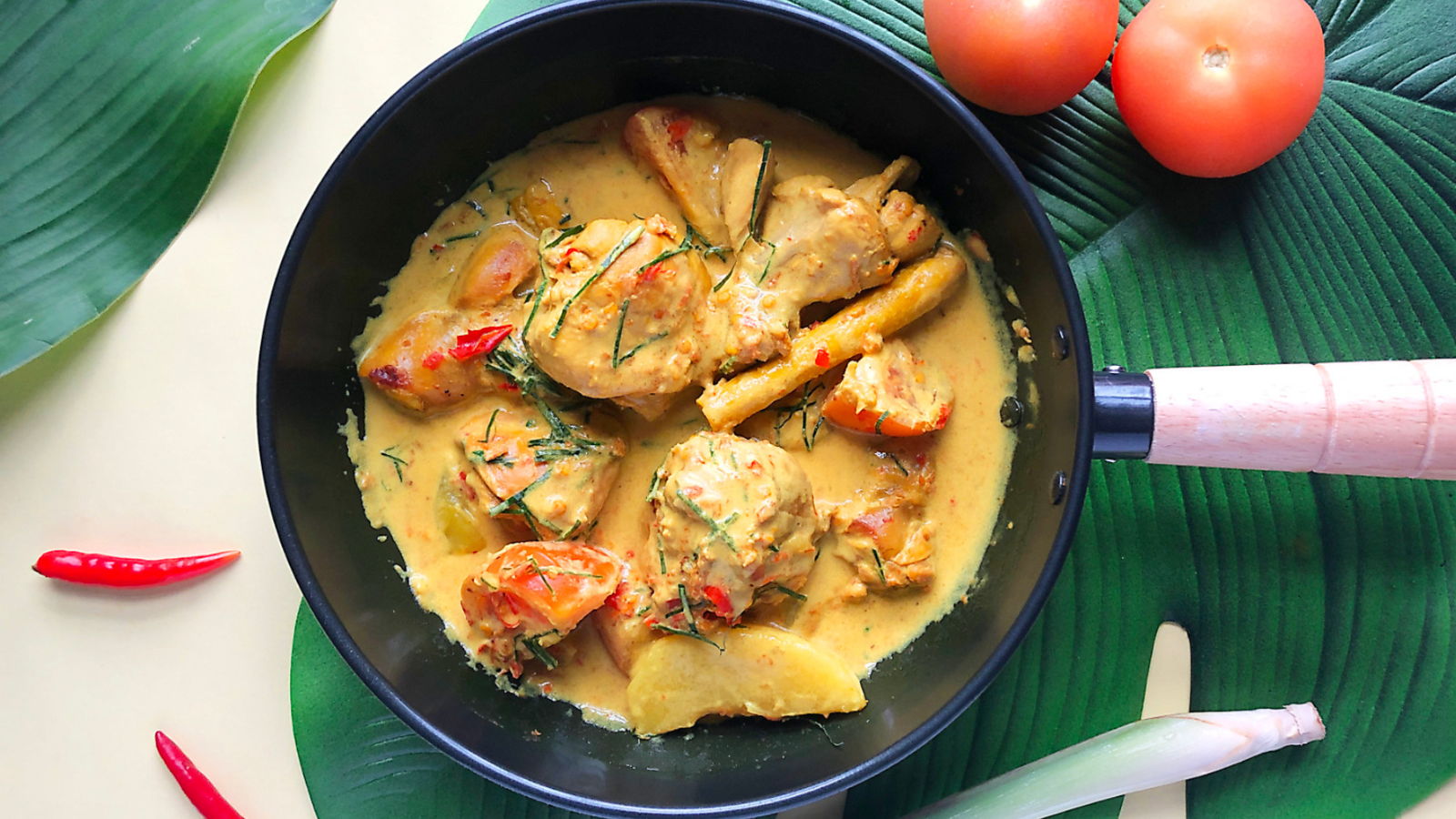Ayam Masak Lemak literally translates to “chicken cooked in cream”. The creaminess refers to the coconut milk in the dish which makes the gravy naturally sweet and luscious. As a classic Malay dish, this recipe is also ‘Whole 30’ which means there is no addition of sugar or oil. This recipe is not adapted to fit any diet but it's a traditional dish I've been eating since young. My kids and husband love the dish so much. Since it's so easy to cook, I prepare the dish often for us to enjoy!
What makes the Negeri Sembilan version of the dish so special?
This is the simpliest version of Ayam Masak Lemak. Without using any oil or additional sweetener, the dish relies on the fats from the chicken and natural sweetness of the coconut milk. The simplicity of the dish makes it even more appetizing! The other varieties are from the states of Johor and Terengganu.
Is this dish spicy?
Yes. But wait. You can always adapt the spiciness according to what you're comfortable with. The spiciness of this curry mainly comes from the bird-eye chillies which are known to be extra spicy. You can either reduce the amount of recommended chillies or fully omit them from the recipe for a non-spicy dish. The other tip is to remove the membrane of the chillies as the heat is concentrated in the inner white pith.
If you still find the dish too spicy, add an additional splash of coconut milk to tone down the heat.
Alternatives for coconut milk
Coconut milk is the traditional selection in curries especially in Malay dishes. However, some may not enjoy its flavour. Should that be the case, I would highly recommend substituting it with evaporated milk, another favourite local choice. Otherwise, plant-based milk such as almond milk, soy milk or oat milk can be used as well.
Can turmeric powder be used?
Sure. Turmeric powder is much more intense than fresh turmeric. That's why you'll need to use a lesser amount of turmeric powder as recommended in our guide. For this recipe, use 1 teaspoon of turmeric powder as a substitute.
What is tamarind peel? Can it be substituted?
Tamarind peel or asam gelugur is an ingredient which adds sourness to a dish. It's often used in classic local dishes such as Asam Pedas Ikan Pari (Sour and Spicy Sting Ray), for example. However, this ingredient may be tough to find at where you are located. Instead of using asam gelugur, use key lime juice. Stir in the juice at the end of the cooking process after the stove is turned off.
Types of meat used for this turmeric curry
Besides chicken, you can use smoked beef (daging salai) or quail. They both go very well with the creaminess of the gravy. Otherwise, seafood or salted fish may also be used.
Additional ingredients
Just for the extra munch, potatoes or young jackfruit slices are added to this golden chicken curry. When using seafood, tangy ingredients such as pineapple or bilimbi (belimbing buluh) are added to get rid of the unpleasant fishiness smell or taste which many do not enjoy.
Cooking turmeric chicken curry in a slow cooker
Of course, you can prepare the dish using a slow cooker. Slow cookers are great if you want your food to be prepared while you run errands. So, when you're back, the meal is ready. With this recipe, you can start by sautéing the chicken until excess water is dried up. Then, add all the ingredients together and allow the dish to cook for 2 to 3 hours over high heat or 4 to 5 hours over low heat. However, I'd suggest adding the tomatoes shortly before serving or they may turned too mushy for your liking.
Preparing paste in advance
You can, of course prepare the turmeric and chilli paste up to 3 days in advance. Just remember to store the paste in the refrigerator. If you plan to make a few portions of the paste for future usage, it can be kept frozen for up to a month.

